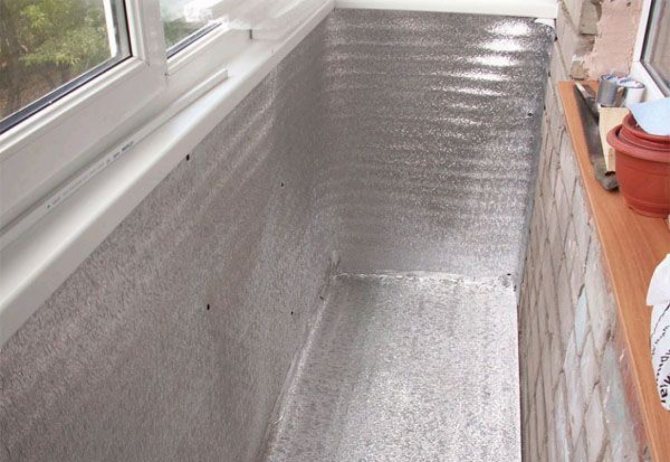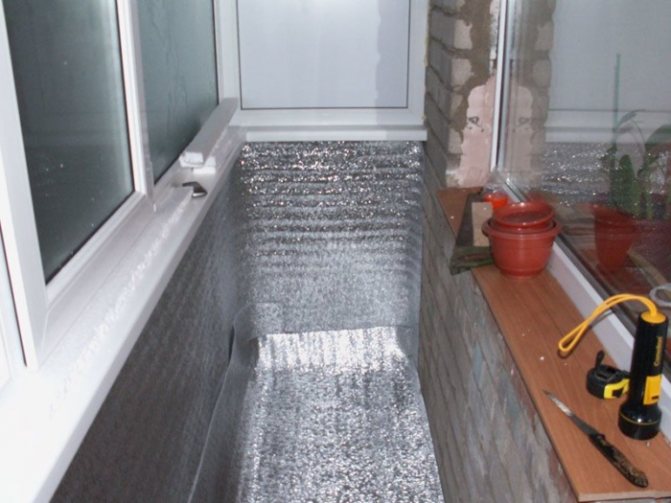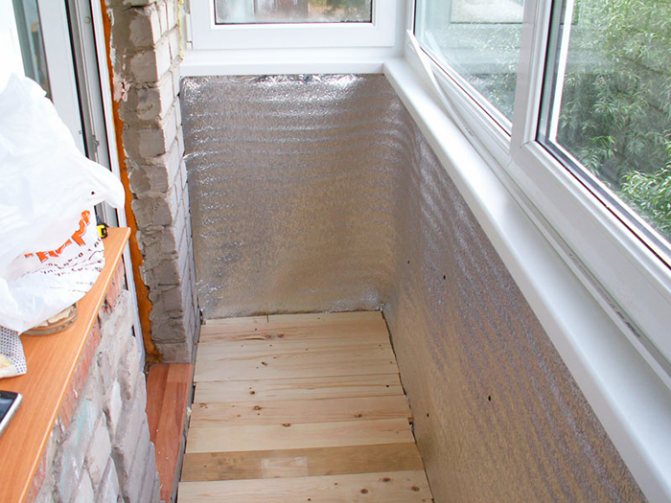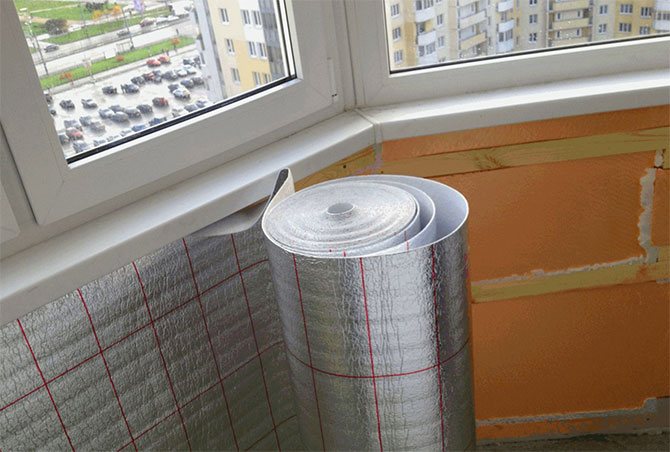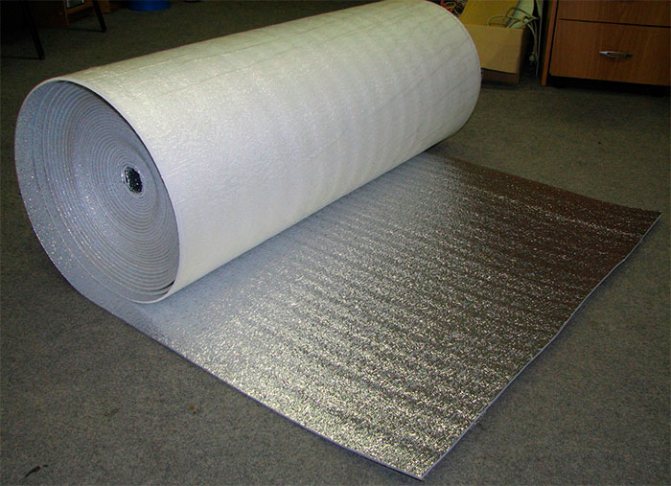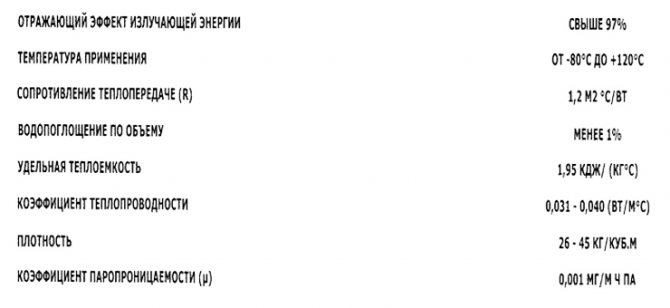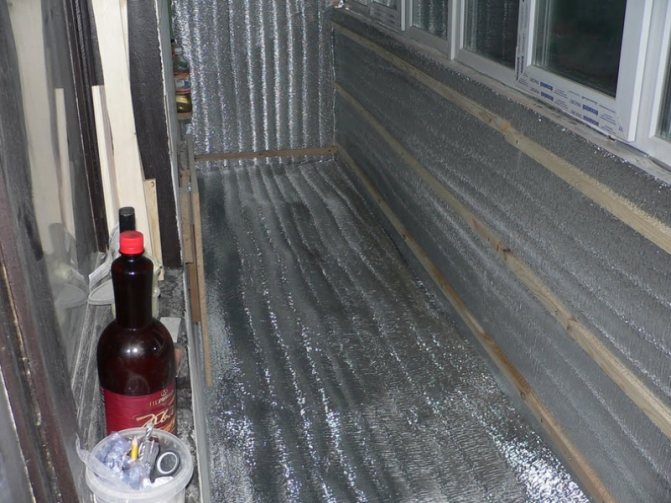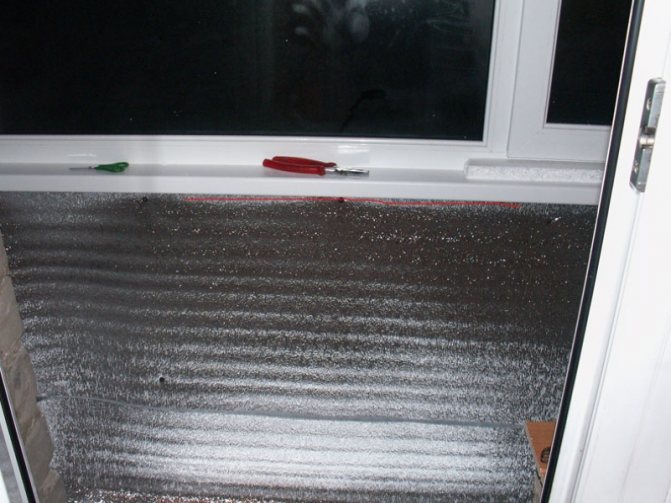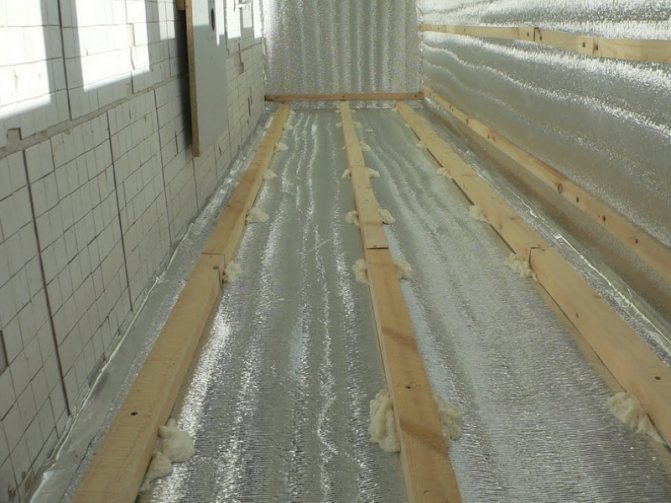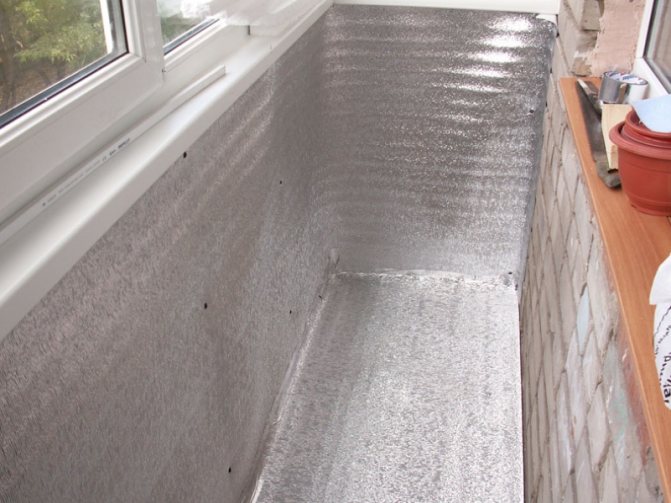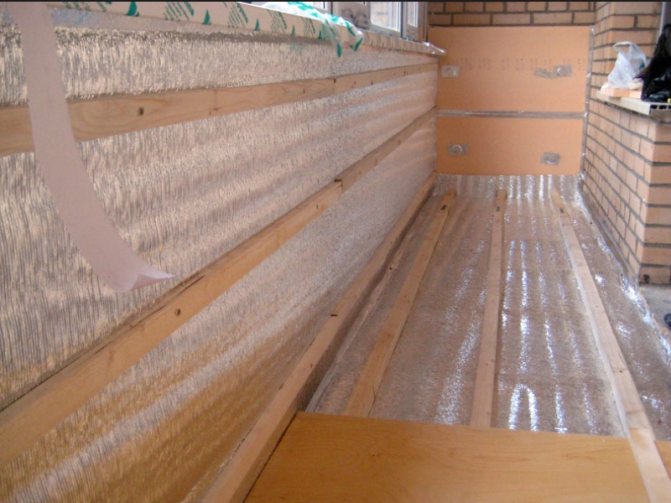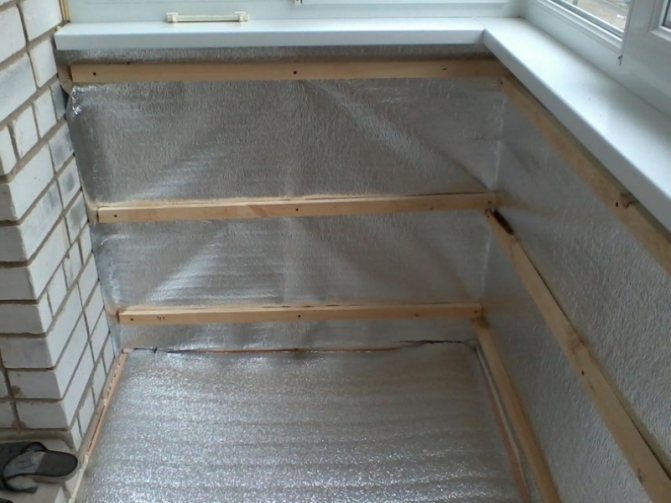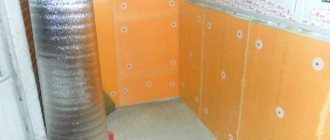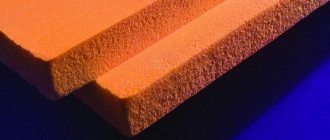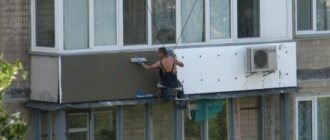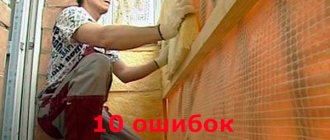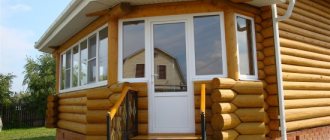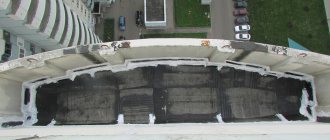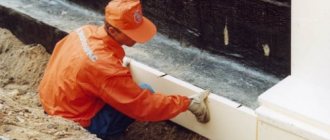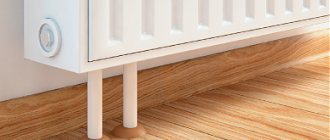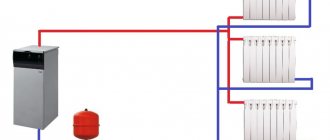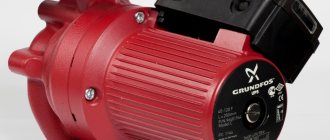It is recommended to insulate the loggia, as this will not only get rid of drafts and dampness, but also make it possible to expand the apartment by combining the balcony with the dwelling. To properly insulate the loggia, you need to use high-quality and environmentally friendly material, such as Penoplex insulation boards. If you still decide to insulate the loggia, then when calculating the necessary materials, you need to take into account that you need to insulate not only the parapet but also the side walls, as well as the floor and ceiling. Loggia insulation technology can be different internal and external.
How to insulate the loggia yourself from the outside
If you insulate the loggia from the outside, then the inner area will remain intact, and with the inside, it will decrease by the thickness of the insulation. However, in order to insulate the loggia from the outside, you will need to purchase climbing equipment and learn how to use it. Therefore, insulation is carried out mainly only from the inside. If you do not have glasses inserted, then first the glazing of the loggia is made, and its insulation is done after. All unnecessary items are removed from the loggia, and the old finish and floor are also dismantled. If there are cracks and chips on the surface, then they must be repaired with mortar. After that, you can think about what kind of insulation is better to buy and in what way you will fix it. The methods of insulating the loggia depend on the type of insulation you use.
Insulation fastening methods
There are two ways to fix the insulation. The first way is to attach it directly to the wall surface using dowels or glue. The second way is to install a heater in a specially mounted wooden or metal niche.
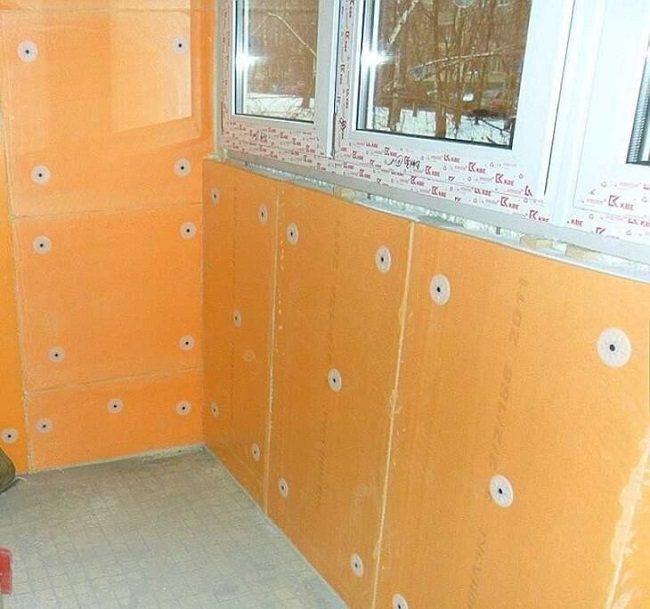
How to insulate a loggia when combined with a room
In order to attach the insulation to the surface on the dowel-fungi, it will be necessary to make a small hole in the insulation, drill a hole in the wall and drive a plastic dowel into it. Then you install the dowel-fungus in the insulation and pull it to the wall with a self-tapping screw.
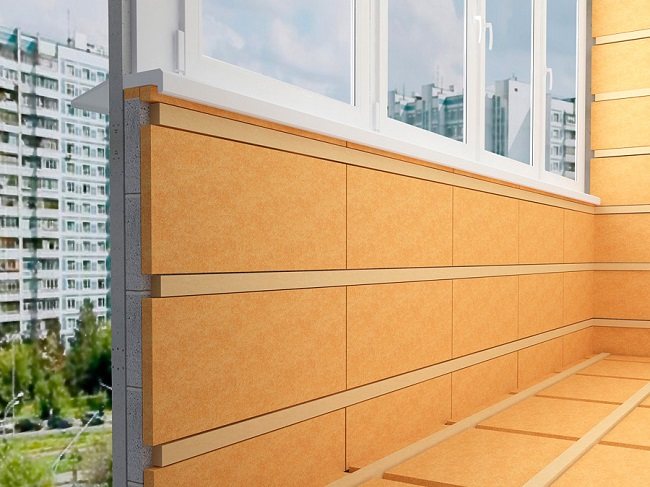

Warming the loggia from the inside with your own hands step by step instructions
To make a frame, you will need to prepare wooden bars with a thickness equal to the thickness of the insulation. The bars must be treated with a special solution against decay. These bars must be fixed throughout the entire perimeter on the floor and ceiling, as well as around the entire perimeter of the parapet. It is necessary to fix a block on the floor that will divide the floor along the balcony into two parts.
Penoplex
Penoplex insulation is a modern heat-insulating material that has a very low coefficient of thermal conductivity, low vapor permeability and does not absorb water. The required thickness of the foam for insulating the loggia depends on the region and can range from 40 to 60 mm. You can easily insulate the loggia with penoplex with your own hands. First of all, the floor is insulated, then the walls and parapet, and last of all the ceiling. If the new finish is applied in the form of plaster or a cement-sand mixture, then the insulation will need to be attached to the dowel-mushrooms, and if the new finish is in the form of plastic panels, waterproof gypsum board or other similar material, then in order to fix the insulation, a frame will need to be made. First, a layer of waterproofing is fixed, and then sheets of foam are laid on it. All seams between the sheets of insulation and the bars are foamed with polyurethane foam.It is recommended to cover the insulation with a layer of vapor barrier made of foil-clad polyethylene film or thin foil-clad foamed polyethylene, while the foil should look inward. After that, you can attach the finishing material to the bars. Thus, they insulate the ceiling on the loggia, as well as the walls and parapet.
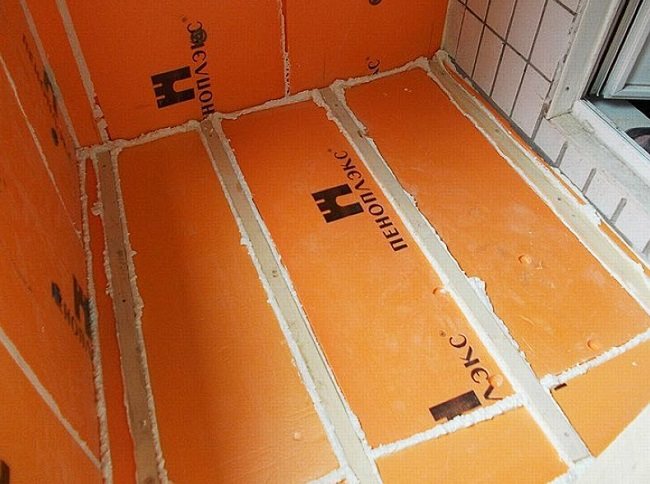

How to properly insulate the loggia from the inside with your own hands with penoplex
Insulation of the floor on the loggia with penoplex is done in different ways. If tiles or linoleum are laid on the floor, then a reinforced mesh is attached to the bars over the insulation and a mortar with a thickness of 4 cm is laid.After the screed hardens, tiles are laid on it with special tile glue or linoleum is glued. If the floor is covered with some kind of material, such as boards, chipboard, laminate or other similar material, then the insulation is placed between the beams and covered with material. In both cases, all joints between heaters must be foamed with polyurethane foam.
Communities ›Do It Yourself› Blog ›Loggia Insulation!
I installed plastic windows on the loggia and then somehow it started ... I did the insulation in the following way: - all the cracks and technological holes on the balcony were pre-sealed, - the floor - 10 cm thick foam, foil isolon, chipboard, lenolium, - walls - 5 cm thick foam , Foil Isolon And Laminate Sheathing, - Ceiling - 5cm Thick Foam Plastic, Foil Isolon And Sheathing With Plastic Panels, - Additionally Electricity Was Provided. As a lag, I used a beam on the floor 50x100, on the walls 50x50. Everything else according to the photo:
Izolon
Foil isolon is of two types: cross-linked polyethylene foam in which the cellular structure is closed and uncrosslinked gas-foamed polyethylene foam in which the molecules are not chemically bonded to each other. For insulation, cross-linked polyethylene foam is used, and not cross-linked polyethylene foam is used mainly as a packaging material or as a vapor barrier. Izolon is a very lightweight and flexible material that has good sound insulation properties. Izolon is an environmentally friendly material, durable and, if properly used, can last up to 90 years. Izolon has a low level of thermal conductivity and can be operated at temperatures from -80 to +80 degrees. Izolon with foil can reflect up to 95% of heat. Isolon is produced with a thickness of 1 to 50 mm. To insulate the loggia, an isolon 10 mm thick is used.
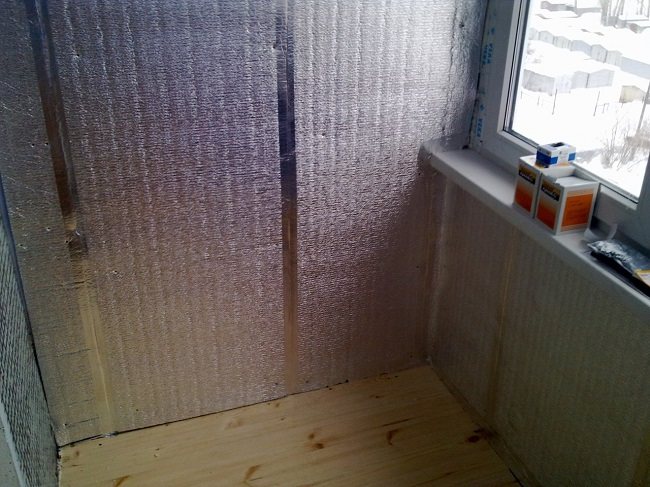

How can you insulate a loggia with an isolon
Insulation of the loggia with isolon begins from the walls, then the floor and, last of all, the ceiling. Wooden blocks are nailed to the walls, floor and ceiling at a distance from each other in the width of an isolon. Lay the izolon with the foil side inside the loggia so that the heat is reflected from it and remains inside. All the resulting joints between the Isolon sheets must be foamed with polyurethane foam, and then glued with metallized tape. You can fix the isolon on the bars with staples. Then finishing material is attached to the bars, and boards, plywood or OSB boards on the floor.
Insulating a loggia with an isolon - how to do it yourself?
Insulation of the loggia with an isolon canvas
Everyone who has had to deal with the insulation of a balcony knows firsthand about condensation and its appearance. Moreover, many did not understand where small puddles appeared on the balcony in winter. To avoid this unpleasant phenomenon, you need to choose the right material in order to insulate the balcony area. As experts advise, it is best to insulate a loggia or balcony using an isolon canvas.
What kind of material is it, why is it remarkable and why is it better to give preference to it?
Isolon is called elastic polyethylene foam. It has cells with a uniformly closed structure.This type of insulation is produced in very different thicknesses, which allows you to purchase the material that is most suitable for this very indicator. Thanks to this, it is possible to protect the balcony area from piercing winds and frost in the best possible way.
An important detail: It is best to use foil material for the insulation process, which has such an important ability: it perfectly reflects heat. Moreover, it is not at all difficult to insulate a loggia using an isolon material.
Penofol
This material is a polyethylene foam covered with polished foil. Penofol is flexible, lightweight, waterproof and vapor-proof, has good heat-insulating and sound-insulating properties. Penofol can be foil on one side or on both sides, and some have a self-adhesive base. When insulating loggias, Penofol is used in conjunction with other insulating materials, such as foam. To insulate the loggia with foam without foam foam, you will need to use a very thick foam, and in a combined thickness of 40 mm.


Step-by-step warming of the loggia with your own hands step-by-step photo instructions
First, the loggia is insulated with foil foil 5 mm thick with foil inside and fixed to the bars with the help of staples. Styrofoam sheets are laid on top of it. It is necessary to foam all the seams in the foam with polyurethane foam. On top of the foam, 3 mm foam foil is laid inside the room and is also fixed to the bars with staples. If a joint is formed between the sheets of penofol, it is foamed and then sealed with foil tape. After that, a crate is attached to the bars, which will create an air gap between the insulation and the finishing material. The lathing can be made of wooden slats with a section of 2 by 4 cm. The laths are nailed perpendicular to the bars every 40-50 cm. When insulating the floor on the loggia with your own hands, you do not need to do the lathing. On the floor, you can lay bars with a larger section so that a gap of at least 1.5 cm is created between the insulation and the floor covering. Having laid the insulation on top, it is closed with plywood or boards on which you can then lay, for example, a laminate.
Expanded polystyrene
This material is very similar to Styrofoam. However, this is an environmentally friendly material that has such advantages as durability, lightness, low thermal conductivity and good sound insulation. Warming of the loggia with expanded polystyrene is made with plates from 40 to 60 mm thick, depending on the region.


How to properly insulate a loggia with your own hands step by step photo
First, the waterproofing of the loggia is laid from the inside, that is, a waterproofing material, such as a polyethylene film, is laid on the surface of the walls, floor and ceiling. Then they begin to lay the sheets on the ceiling, then on the walls and last but not least on the floor. Having laid all the sheets, you need to foame all the seams with polyurethane foam, which does not contain toluene, which can dissolve polystyrene foam. A vapor barrier layer must be laid on top of the expanded polystyrene; foil-clad polyethylene film is best for this. It is recommended to glue this foil directly to the expanded polystyrene with polyurethane glue. All seams on the vapor barrier must be sealed with foil tape. After that, you can start finishing.
Foil isolon as a way to insulate a balcony or loggia
The article was published in the Materials subsection (which is part of the Insulation section).
The modern market for heat-insulating materials is almost continuously replenished with new products that are universal in their characteristics and have a wide range of applications. The new generation of such materials should include a bright representative of the sphere of reflective insulation - foil-clad isolon.
This material is used in various fields, the main of which is construction and mechanical engineering.
Mineral wool
This material has been used for a long time. Mineral wool is not afraid of fire, is harmless, and has good thermal insulation properties.
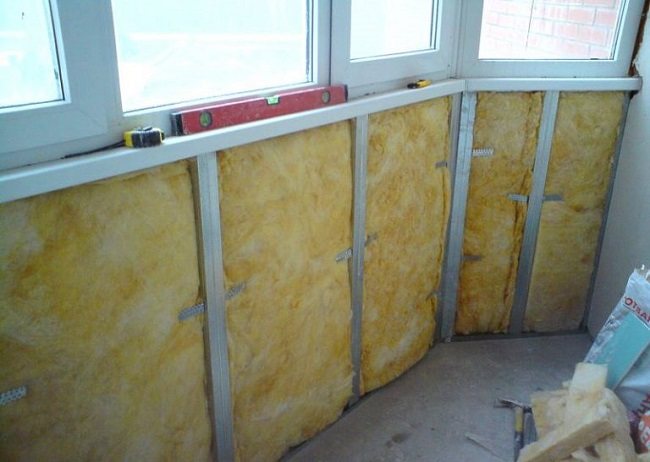

Insulation of the loggia photo
When insulating a loggia with cotton wool, it should only be laid in a pre-prepared frame made of wooden bars with a cross section of 5 by 5 cm. The loggia must be waterproofed when insulated with mineral wool. As a waterproofing, you can use a polyethylene film or roofing felt. Then mineral wool is unrolled in the frame. First, it is rolled out and attached to the walls, then laid on the floor and lastly attached to the ceiling or the space between the slab and the finishing material is filled with it. Mineral wool is best fixed to the wall using dowels. Having made the insulation of the loggia with mineral wool, it is necessary to glue all the joints between the cotton wool with tape. A vapor barrier in the form of a foil-clad polyethylene film is spread over the mineral wool. The foil should look inward. There should also be a vapor barrier on the ceiling, even if the cotton wool is not attached to the ceiling, but is simply crammed between the finish and the ceiling slab. When you finish the correct insulation of the loggia, finishing work begins.


